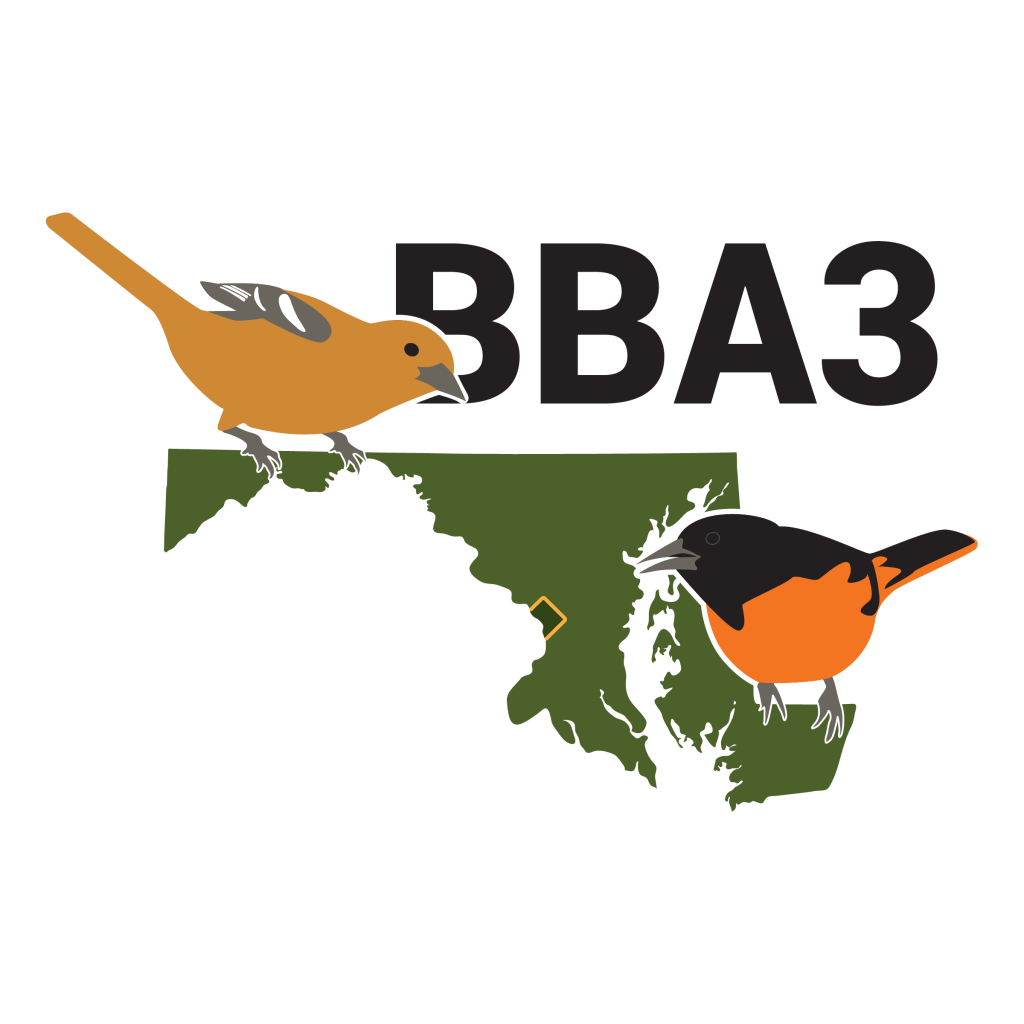Calling all Bird Enthusiasts! Join the Maryland-DC Breeding Bird Atlas
 If you have seen the recent news, you may have heard that the number of birds in the United States and Canada has declined by three billion, or almost 29%, over the last 50 years. Unfortunately, Maryland is not exempt from this decline.
If you have seen the recent news, you may have heard that the number of birds in the United States and Canada has declined by three billion, or almost 29%, over the last 50 years. Unfortunately, Maryland is not exempt from this decline.
With changes in habitat and climate over the years, it is crucial to know what species are still utilizing Maryland to breed. One important population survey method is a breeding bird atlas which covers a large geographic area. By tracking bird populations, distributions and the timing of their breeding, researchers can understand how an ecosystem’s health is changing over time. Maryland is fortunate to have breeding bird atlas data from 1983-1987 and 2002-2006. The majority of the data collected during these efforts was from volunteers. Beginning this year, the third Maryland – District of Columbia Breeding Bird Atlas (MD-DC BBA3) project and will run through 2024, and you can join in the effort!
Data for the Atlas are collected through the MD-DC BBA3 eBird portal and not the standard eBird page. Data can be collected across the state or in your own backyard. You also can submit one observation or multiple sightings. You just have to be able to identify bird species and be willing to submit your sightings into the MD-DC BBA3 eBird portal.
If you are interested in joining the effort or just want to know more, check out the MD-DC BBA3 eBird page which includes background information, a detailed handbook, a list of events, and social media link to stay informed. Gabriel Foley is the MD-DC BBA3 Atlas coordinator. For more information, you can connect with him on Twitter and Instagram at @birdnirdfoley, or send him an email at mddcbba3@mdbirds.org.
Happy New Year HabiChat fans!
Winter can be a tough time of year for many of our local wildlife species. You can give them a hand by creating habitat and providing natural foods. In this winter edition of HabiChat, learn about Cedar Waxwings, a lovely resident bird that can be found in backyards, as well as our native inkberry holly that provides important cover. In addition, this issue also includes articles on Winter Greens for Wildlife, Eastern Screech Owl Nest Boxes, and how to help with the 3rd Maryland-DC Breeding Bird Atlas.
Winter is also a time for maintenance projects, so don’t forget to clean out and repair nest boxes and prune your shrubs and trees. If you are feeding birds, please also make sure to keep those feeders clean. In addition, water is crucial to many species this time of year. Consider adding a heated bird bath or pet water bowl to your landscape to help local wildlife. If you are looking for fun projects to do with the kids, why not go on a winter safari or make seed wreaths for the birds?
Finally, I am pleased to announce that we have completed the Simple School Wildlife Garden Guide. The guide contains basic information on how to start a school wildlife garden and includes suggested plants and designs for three types of gardens: a monarch garden, a songbird garden, and a pollinator garden. The guide can be found on our Schoolyard Wildlife Habitat page.
Happy Habitats,
Kerry Wixted
Click here to have HabiChat—the quarterly backyard wildlife habitat newsletter from the Wild Acres program—delivered right to your inbox!
In this Issue
Habitat Tip: Eastern Screech Owl Nest Boxes
Habitat Tip: Winter Greens for Wildlife
Native Animal Profile: Cedar Waxwing
Native Plant Profile: Inkberry


 1-888-373-7888
1-888-373-7888 233733
233733